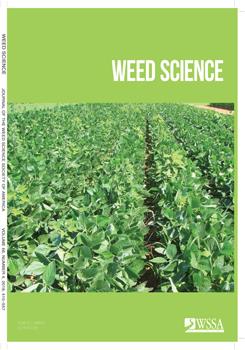Burcucumber (Sicyos angulatus L.) is a highly invasive vine that has become naturalized in the humid Black Sea region of Turkey, but previous to this study there was no information on the germination biology of this weed. The germination biology of three naturalized populations of S. angulatus from the Black Sea region was studied in laboratory and greenhouse experiments. The germination of nondormant seeds was observed under different photoperiods, constant temperatures, and varying levels of pH, salinity, and osmotic potential. Furthermore, seedling emergence from various soil depths was investigated. The seeds of all populations proved nonphotoblastic (82% to 90%, 55% to 66%, and 48% to 56% germination under 12-, 24-, and 0-h photoperiod, respectively) and germinated over a wide range of temperatures (5 to 40 C). Seedlings emerged from all seed burial depths (0 to 15 cm); however, germination was drastically reduced (>90% reduction) beyond 6 to 8 cm. Seed germination was 30% to 38% for seeds placed on the surface and increased to 78% to 88% for seeds buried 2 cm deep, while germination was severely reduced for seeds buried 10 and 15 cm deep (8 to 12% and 0 to 6%, respectively). Seeds of all populations were found to be sensitive to osmotic and salinity stress and to highly acidic and alkaline pH levels. All populations had similar requirements for germination that are directly related to their area of naturalization. These results indicate that the species has limited potential for range expansion to arid, semiarid (nonirrigated), and relatively saline areas. However, humid, salinity-free, and frequently irrigated areas of the country are at high risk of invasion. In arable lands, deep tillage followed by shallow tillage and effective management of emerging seedlings could deplete the soil seedbank in the long run. However, there is an urgent need for effective strategies to manage the species in other nonarable areas.
How to translate text using browser tools
1 July 2018
The Influence of Environmental Factors on Germination of Burcucumber (Sicyos angulatus) Seeds: Implications for Range Expansion and Management
Huseyin Önen,
Shahid Farooq,
Sonnur Tad,
Cumali Özaslan,
Hikmet Gunal,
Bhagirath S Chauhan
ACCESS THE FULL ARTICLE

Weed Science
Vol. 66 • No. 4
July-August 2018
Vol. 66 • No. 4
July-August 2018
Burcucumber
ecological adaptations
germination biology
management
population differences




